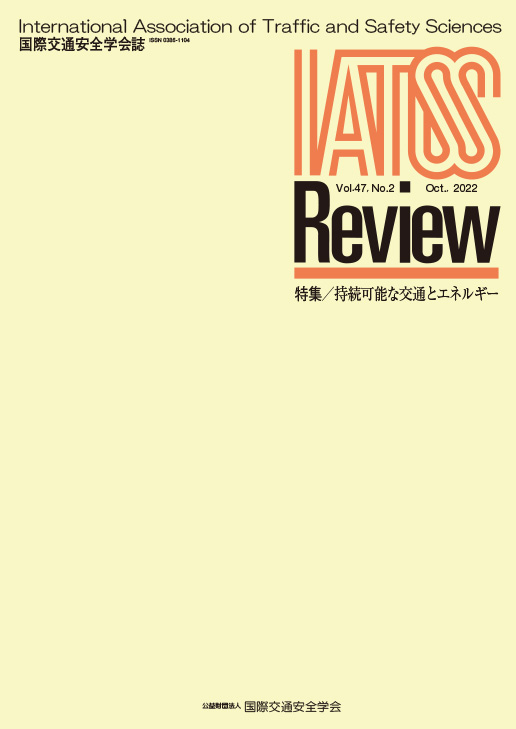Volume 47, Issue 2
Sustainable Transportation and Energy
Displaying 1-9 of 9 articles from this issue
- |<
- <
- 1
- >
- >|
Opinions
-
2022 Volume 47 Issue 2 Pages 77
Published: October 31, 2022
Released on J-STAGE: October 31, 2022
Download PDF (405K)
SPECIAL FEATURE : Sustainable Transportation and Energy
Introduction
-
2022 Volume 47 Issue 2 Pages 78-79
Published: October 31, 2022
Released on J-STAGE: October 31, 2022
Download PDF (305K)
Review
-
2022 Volume 47 Issue 2 Pages 80-89
Published: October 31, 2022
Released on J-STAGE: October 31, 2022
Download PDF (1968K)
Review
-
2022 Volume 47 Issue 2 Pages 90-100
Published: October 31, 2022
Released on J-STAGE: October 31, 2022
Download PDF (1725K)
Information
-
2022 Volume 47 Issue 2 Pages 101-107
Published: October 31, 2022
Released on J-STAGE: October 31, 2022
Download PDF (1010K)
Review
-
2022 Volume 47 Issue 2 Pages 108-115
Published: October 31, 2022
Released on J-STAGE: October 31, 2022
Download PDF (1703K)
Review
-
2022 Volume 47 Issue 2 Pages 116-125
Published: October 31, 2022
Released on J-STAGE: October 31, 2022
Download PDF (1501K)
Report
-
2022 Volume 47 Issue 2 Pages 126-133
Published: October 31, 2022
Released on J-STAGE: October 31, 2022
Download PDF (2831K)
Review
-
2022 Volume 47 Issue 2 Pages 134-141
Published: October 31, 2022
Released on J-STAGE: October 31, 2022
Download PDF (1844K)
- |<
- <
- 1
- >
- >|
